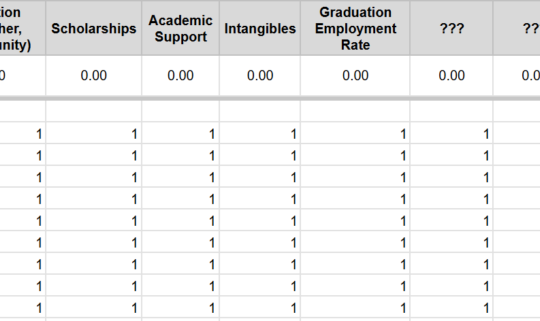It’s undeniable that the cost of a college education is on the rise. Many universities are increasing tuition by more than 3% annually. It’s worthwhile to invest time in researching the total cost of attendance, which includes tuition, housing, books, fees, meals, and out-of-state tuition fees. The yearly cost to attend your dream university could be $60,000, $70,000, or even over $80,000. US News & World Report has an excellent article college financial aid.
From my experience here are six ways you can help pay for college:
- Enrolling in numerous college credit courses during high school, such as dual enrollment and AP courses, can decrease the number of credits you need to complete in college. This advantage could potentially shorten your overall undergraduate duration by a semester or even more.
- Begin your education at a community college! Make sure the courses you enroll in can be transferred to a four-year program. The cost difference is approximately $300 per credit hour.
- Completing the FAFSA can provide several benefits if you qualify, such as grants, federal work-study opportunities, and government student loans. Additionally, if you demonstrate financial need, you may become eligible for a wider array of scholarships.
- Applying for scholarships is key. Abundant funds are available; you simply need to pursue them diligently. Approach this as if it were your initial employment. Exert effort, remain concentrated, and persist — you might just secure sufficient scholarships to finance your education.
- Attending in-state schools can be financially advantageous due to lower tuition rates. Opting for out-of-state education incurs extra expenses, such as higher tuition fees, travel expenditures, and increased living costs. Furthermore, numerous in-state institutions provide merit-based scholarships recognizing high school achievements.
- Avoid switching majors or changing schools, as each change can extend the time needed to graduate. It’s crucial to invest time early on to choose the right major. When changing schools, there’s a risk that many of your completed courses may not transfer, which can also add to the time required. Remember, time is money!
Additional ways to help pay for college:
Students:
Summer job and/or a side hustle.
Summer jobs can be helpful, if you plan on saving the money for your college. In addition to getting a summer job, see if you can pick up a side hustle that you can take with you to college. Tutoring is a good option, as is something like graphic design or videography. If you have the skills to get into the freelance world when you’re eighteen years old, you can book clients and set your rates while you’re taking classes and making friends.
Parents:
What Percentage of Parents Have a College Fund for Their Children?
According to the Educational Data Initiative, 30% of parents have a college savings fund for their children. While some parents keep these savings in a 529 Plan, the Educational Data Initiative reports that 54% of parents are unaware of how a 529 Plan can help them cover part of their children’s college costs.
Is It Too Late to Open a 529 Plan?
Parents whose children are in high school can still open 529 Plans and take advantage of potential investment growth. While you could get the most out of your 529 Plan if you open it when your child is born, the best 529 Plans are designed for families at every stage of the college savings game. Plus, getting grandparents involved can help savings grow more quickly.
Families:
I stress – student loans should be the last resort! If you must – What Are the Best Student Loans?
Federal student loans are some of the best options for people who want to fund part of their college tuition costs since federal loans often include fixed interest rates and income-driven repayment plans. Private student loans are generally more expensive than federal loans, but the best private student loans come with benefits like grace periods, flexible repayment terms, and cash-back rewards.








[…] Research scholarships – Get the Money […]
[…] Paying for college is the next step to ensure that you can attend your dream college. There are many ways of accomplishing this goal. I have written about applying for scholarships – please check this post out. […]